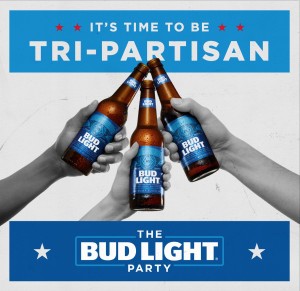Jackie Brown Revisited
Nineteen years ago I interviewed Quentin Tarantino one-on-one in the manager’s office of the Regal Arbor 8 in Austin. Tarantino was about to introduce the Southwest premiere of Jackie Brown. Crammed into the tiny office, waiting for me to finish, were Richard Linklater, Mike Judge, and Robert Rodriguez as well as the theater manager.
Two weeks ago Quentin Tarantino was putting the finishing touches on Jackie Brown. Last weekend he completed what has become a Tarantino tradition – to accompany his latest film to Texas as a benefit for the Austin Film Society.
Tickets, priced at $25, go directly to the AFS, a publicly supported, non-profit organization (with Richard Linklater acting Artistic Director) that gave away $50,000 to twenty Texas filmmakers and artists this year.
Jackie Brown with its tony cast and sleek view of Southern California underlings may be the most A-level blaxploitation film ever made.
As directed and adapted by Tarantino from Elmore Leonard’s novel Rum Punch, Jackie Brown is another instant celebration of cultural phenomena, real and fictional. Jackie Brown encompasses The Delfonics, Cabo Airlines, designer sports apparel, Pam Grier the actress (as opposed to Pam Grier as a pop reference), Acuna Bros., Teriyaki Donuts, countless blaxploitation films; not in that order, and mixed into the most serious crime-drama this side of 110th Street.
Some of Tarantino’s cultural references are there on the table in front of you. Only this time he doesn’t personify them with lines, as may be the case with the Big Kahuna Burger from Pulp Fiction.
“I say to people, if you’re expecting to see Pulp Fiction Part 2, you’re going to like the movie a lot, but you ain’t gonna get what you’re expecting,” Tarantino says.
“People talk about me like I’ve already done five or six films, and I’ve only done two. So now on this third one they can see, oh okay, he’s making very individual films that stand up on their own.”
In the depths of the Arbor Seven, on the second floor, Tarantino sits and talks in a manager’s cubicle, munching on popcorn. Meanwhile the small room fills with chatter and Austin resident filmmakers Mike Judge, Robert Rodriguez and Linklater, all of whom will take part in a general Q&A post-screening.
Tarantino’s dressed in a Late Night with Conan logo-emblazoned polo-style shirt and a black leather jacket, not unlike one that Michael Keaton (as ATF agent Ray Nicolet) wears in the movie. Like two of Jackie Brown‘s main characters, Tarantino sports a Kangol cap, his black with a red and yellow vertical stripe, worn backwards.
Tarantino’s A Band Apart Productions has the option on four Elmore Leonard novels, including Rum Punch, Kill Shot and Freaky Deaky, along with a western. Three of Rum Punch‘s characters, Melanie Ralston (Bridget Fonda), Ordell Robbie (Samuel L. Jackson) and Louis Gara (Robert De Niro), also appear in an earlier Leonard novel, The Switch.
“Blaxploitation movies are like the jumping off point,” Tarantino says in response to a question about same. But more to the point, Tarantino the director offers restraint when subtlety is required, and provides his actors with the lines and atmosphere that can make a great film.
“Part of it is that this is a film about older people, everybody has age in it, characters are in their mid 40s, or early 50s, like Max. The 1970s was their time,” Tarantino says. “They had promise and opportunity, and now the movie is taking place 20 years after that, and they’re all desperate.”
“The character of Louis is one of the best acting roles I’ve ever written,” says Tarantino. “But it’s not like my other roles, filled with great dialogue. It’s a performance that’s gotten across in body language.” He relates how he was sitting next to De Niro on a plane during the time he was adapting the script. “Here’s the greatest actor around and I’m telling him about body language.”
Tarantino has spent enough time writing scripts and acting on television and movies to have his own method of acting. “Every actor has a deal, there’s different schools,” Tarantino shrugs. “I know how I like to act, and what I need to bring to the role to be as good as I can be. But not every actor’s like that. So, when it comes to directing actors you’ve got to work their way.
“The thing I’m the proudest about this movie, I don’t think these characters walk around like movie characters doing movie things, following a movie plot. For the first hour you just hang out with them. It’s like a hang-out movie,” Tarantino says smiling.
“You get to know them like you do real people. They’re good company. When you read an Elmore Leonard novel, you live with the characters.”
An important part of Tarantino’s script writing process involves listening to records, as well as inspiration from great films. For Jackie Brown Tarantino choose over half of the music during writing sessions. “That’s how I find the rhythm of the movie. Just dive in my album collection.”
One movie role model, notes Tarantino, is Rio Bravo: “Where you have a good storyline, but a small storyline. The movie’s two-and-a-half hours, but if you’re laughing for two-and-a-half hours, you’re not bored.”
Some of Tarantino’s lines in Jackie Brown come from the actor’s real life. Like photos of Fonda as a teenager in a roller boogie outfit, or a scene where she’s watching a movie on TV featuring her father Peter Fonda. “Turn it off,” Melanie whines. For Robert Forster, Tarantino added lines where Max talks about his hair-weave, and how he feels about it. The accolades have just started to roll in for Pam Grier and Samuel L. Jackson in the lead roles.
Other projects on Tarantino’s calendar, as either executive producer or with a writing credit, include two in the From Dusk Till Dawn franchise. In the original, Tarantino played a murderous brother alongside George Clooney. “I think we really worked well as brothers in the movie,” recalls Tarantino. “We had that give and take that brothers have.”
The first one, From Dusk Till Dawn: The Hangman’s Daughter, takes place 100 years ago and is based on the demonic Satanico Pandemonium, played in FDTD by Salma Hayek. From Dusk Till Dawn: Texas Blood Money, helmed by Evil Dead 2 scribe Scott Spiegel, takes place two weeks after the first one, and concerns a bunch of Texas bank robbers who end up stopping at the, you guessed it, Titty Twister bar.
Tarantino mulled over making a movie version of The Man From U.N.C.L.E. at Warner Bros. but is now saying no about that project. He’s also involved on a version of Modesty Blaise, but that he also won’t direct.
In a surreal twist to in-store appearance, the after-screening Q&A with Q.T., Rodriguez, Judge, and Linklater proceeds next door to the cinema at a large Barnes and Noble.
The group stands on a balcony flanked by two escalators and those Barnes and Noble woodcut posters, in this case depicting Virginia Woolf and Samuel Clemens. Judge (who gets the biggest laugh with his Hank Hill-spoken line about Tarantino, “Boy I want to tell you. If you like sodomy….”), Rodriguez, Linklater and Tarantino stand there answering questions for around forty-minutes, just like the Four Musketeers of contemporary cinema that they are.
— Michael Bergeron










![FPH_2016_AdPackage_Lovebuzz_420x75-FeaturedBanner[Mobile]](../2016/08/wpimages_subdomain/FPH_2016_AdPackage_Lovebuzz_420x75-FeaturedBannerMobile.png)


